A skateboard wheel, also known as a caster, allows you to move your skateboard. They also assist in determining your speed.
Skateboard wheels are often made of polyurethane. They come in different durability levels, colors, and sizes to suit your skateboard preferences and style.
Both the diameter and durometer of skateboard wheels are measured. Durometer describes the hardness of the wheel, and diameter measures the size of the wheel.
You have to think about how you’re going to use your skateboard and your personal preferences. Customizing your deck helps you decide on the wheels that go with your trucks, hardware, and deck.
Skateboard Wheel Types
1. Park Wheels
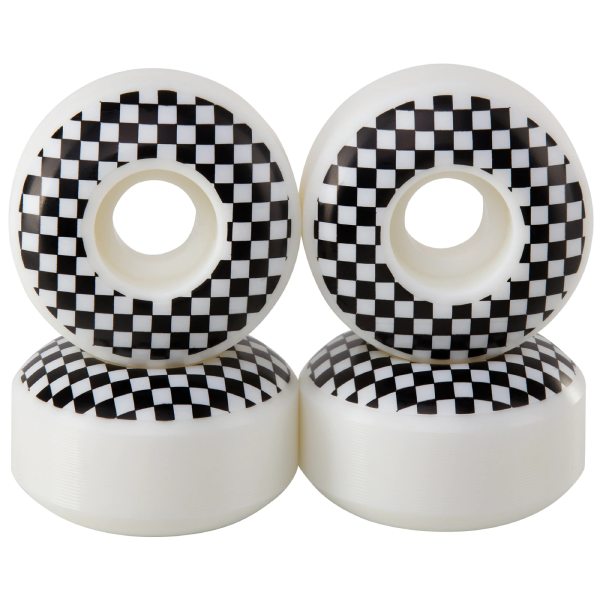
Durometer 95-101a, diameter 50-60mm
Due to their lightweight, speed on smooth surfaces, and ease of sliding, these hard wheels are the best skateboard wheels for park and street skating. It’s easier to perform tricks such as ollies, flips, and power slides.
2. Cruiser Wheels
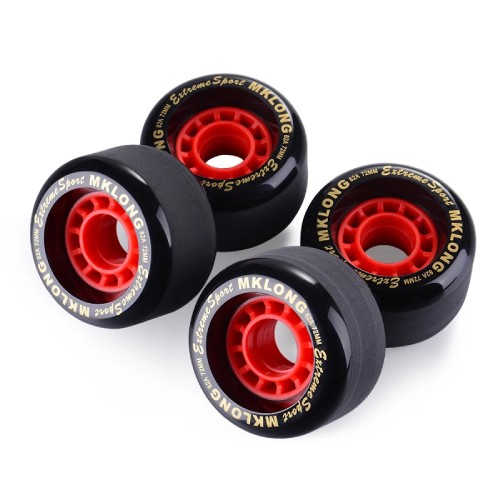
Durometer 78-90a, diameter 54-60mm
Cruiser wheels, also known as soft wheels, are softer and bigger than the street/park wheels. They fit any deck and roll fast on different surfaces.
They are also called filmer wheels are they can handle the rougher pavement materials and roll smoother, offering a steady shot.
3. Longboard Wheels
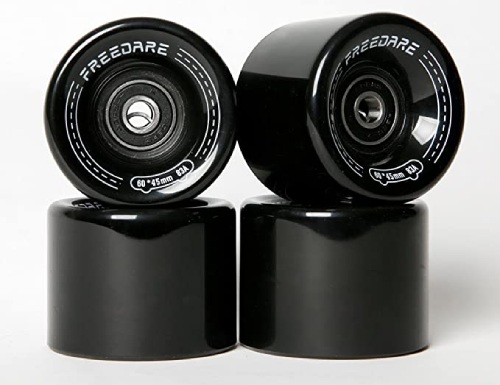
Durometer 75-85a, diameter 60-75mm
These happen to be the softest and biggest wheels that you can buy. A longboard wheel is designed to grip even on rough surfaces and power through corners.
Carving and cruising, sliding, and downhill racing are just a few of the options available.
Tools To Measure Skateboard Wheels
-
Ruler
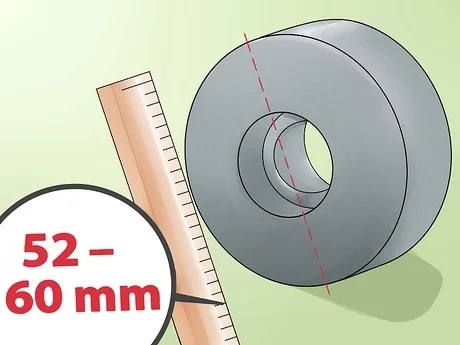
A millimeter ruler can be used.
-
Caliper
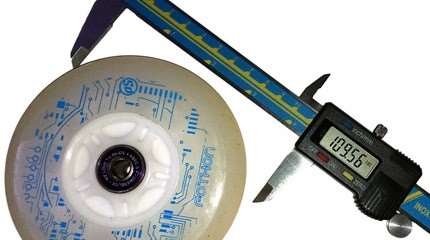
Two moveable jaws or legs make up this measuring device. Calipers can also be used to measure distances across surfaces and the distances between holes, aside from measuring the diameter and thickness of objects.
-
Large Jaws
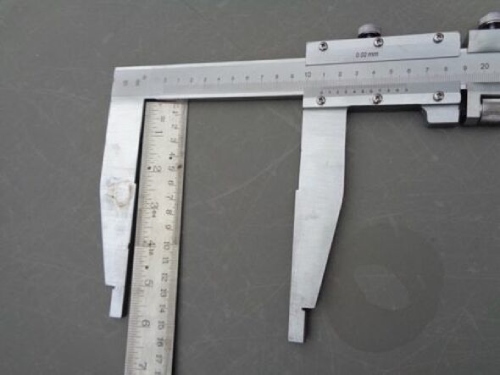
Objects can be measured from the outside by using these.
-
Main Scale
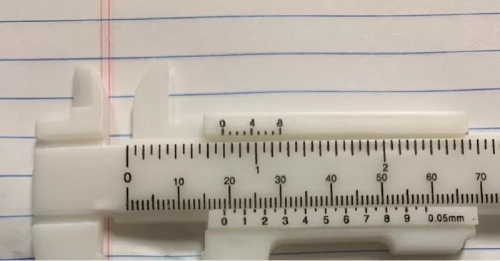
This works like a ruler. It measures an object in millimeters which is metric or inches as inches.
-
Diameter
50-53mm
Slow, small wheels that are perfect for smaller riders and performing tricks.
54-59mm
These are more of average size and perfect for the bigger 6’0’’ riders and beginners that are trying out bowls, park, and street riding.
60mm +
The wheels are large and meant for filmers, cruisers, and longboards.
-
Wheel Hardness
78a-87a
These soft wheels are suitable for filming, cruisers, longboards, and on the street. The wheels are designed to make your ride smooth and conquer rough surfaces and hills easily.
88a-95a
These types are faster and slightly harder but don’t have as much grip. You can still get a good enough grip for rough and street surfaces.
96a-99a
This size is perfect for beginners. They are great for ramps, skateparks, pools, and street riding.
101a +
Now here we have the fastest and hardest wheels with a lack of grip. Any type of skating wheel that is 101a and above are considered to be professional wheels and used for riding vert and parks.
83b-84b
Wheels that are in the b scale are very difficult. Therefore, they measure 20 points less than that of the A scale ones to allow the scale to expand 20 points more for the hardest wheels.
-
Wheel Shape
Standard
A popular go-to shape since the early ’90s, this shape first appeared in 1990. The contact patch is narrow due to the large radius around the bearing seat. It’s a fantastic all-rounder.
Radial
These are similar to the classic series and have a radiused corner that has a flatter wheel side. They have a thicker contact patch area and a wider contact patch in contrast to the width of the actual wheel.
The radial slims come in 3mm narrower than the regular ones. You get more lock without much slip, thank the classic sort.
Core
The core of a skateboard wheel is typically a plastic area where the bearings are located. The core can sometimes look like the spokes in a bicycle wheel. They can also be more subtle.
This type is designed to give you a softer wheel without compromising on the stability of the bearing. These can sometimes be lighter than other wheels.
Cruiser
The low durometer of these wheels ensures a smooth ride. Perfect for vinyl cruisers, old-school setups, and longboards, they are not usually designed for tricks.
Conical
Conical means the cone shape that is created when flatter surfaces are used from the side of the whee to the contact patch.
The double conicals were around in the 1970s it means to have a conical profile on each side of your board wheel. This shape has now been modified so it can be suited for harder, smaller wheels.
It allows for a nice shaped corner, flatter wheels, and a bigger contact patch. The full conical sits around 2-3mm wider than the others.
-
Wheel Texture
Most hard urethanes will feel smooth to the touch. Wheels can be smoother on some than others, sticky on others, and even have tread on some. It depends on what you want to accomplish with your board which one is best for you.
- All-around skaters will benefit from smooth wheels.
- With sticky wheels, you’ll experience smooth rolling and good traction. There are some skate filmers who roll behind the skater on a stickier wheel to make the footage seem more silent.
- Treaded wheels are ideal for rougher streets or skating terrain (rocky, cracked). As a result, you will be able to stay on course because of the built-in tread.
-
Lip Radius
Lip profile is one of the most important factors that influence heel performance. How a wheel interacts with the pavement depends on whether its lips are sharp and angle 90 degrees or rounded off.
By simply digging into the pavement, a sharp lip provides more traction when turning. If the lips are rounded, they are less likely to flex and offer less traction.
How Do Riser Pads Help To Choose Skateboard Wheels?
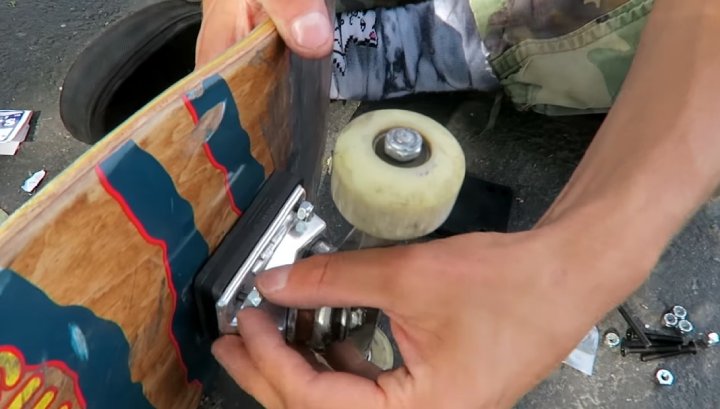
Wheel bite is more likely to occur if you have larger wheels. Skateboards with large wheels, such as longboards or cruisers, may benefit from risers.
For longer boards and larger wheels, a riser pad needs more height. You can also use them to protect your board from wheel bite when landing a stunt.
The more distance between the tail and the ground, the more pop your board gets.
Keeping your hardware from vibrating loose is the major benefit of skateboard riser pads.
If the wheels are smaller than 55mm, a riser is not usually required. The hardware will be held in place even with 1/8″ risers.
Why Do Skateboard Wheels Have Flat Spots?
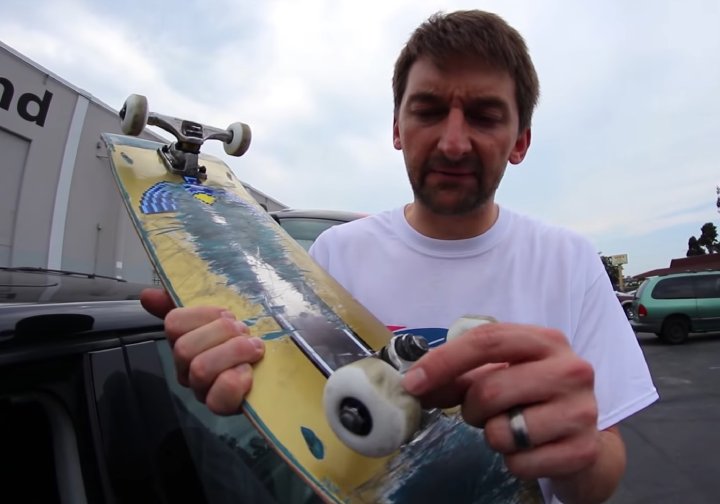
When the rider turns 90 degrees to the direction the wheels are moving, flat spots occur on the board’s wheels. There will be a spot on the board wheel as a result of the board wheels locking up & stopping.
The wheel will often appear egg-shaped or oval, which isn’t as noticeable as a flat spot, but can bump you off the road.
In both oval and flat spots, you will be slowed down, and if they are extremely bad, you will be completely thrown off. This is something that is easily avoided with proper riding technique.
FAQs
1. Can board speed be affected by the wheel’s softness?
Ans. Is there a time when you should not ride a skateboard with soft wheels? Soft wheels are not recommended for transition skateboards, skateparks, or stationary beginner tricks like shoves and ollies. It’s best to have soft wheels for cruising, bombing hills, catching high speeds, and when you’re a cameraman.
2. Can the hardness be affected by the color of the wheels?
Ans. Colored wheels do affect the durometer, according to many people. The addition of color might slightly alter the formula. It would be best to consult a chemical engineer regarding whether or not it will reduce the wheel’s integrity. The difference in feel and grip between the natural and colored urethane is that the colored ones feel a bit grippier and softer.

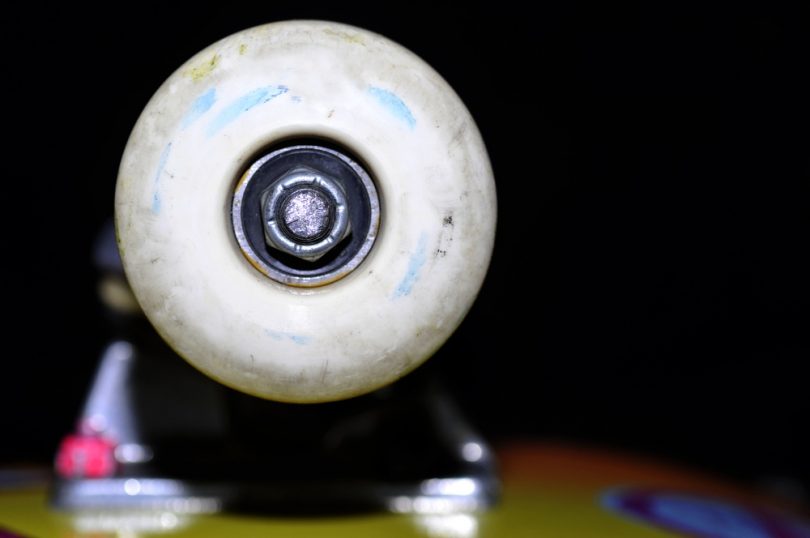
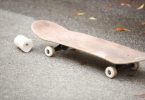
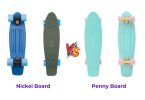
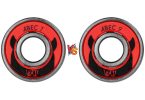
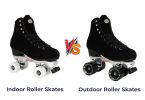
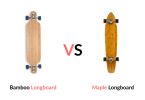
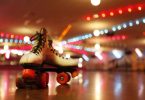

Leave a Comment